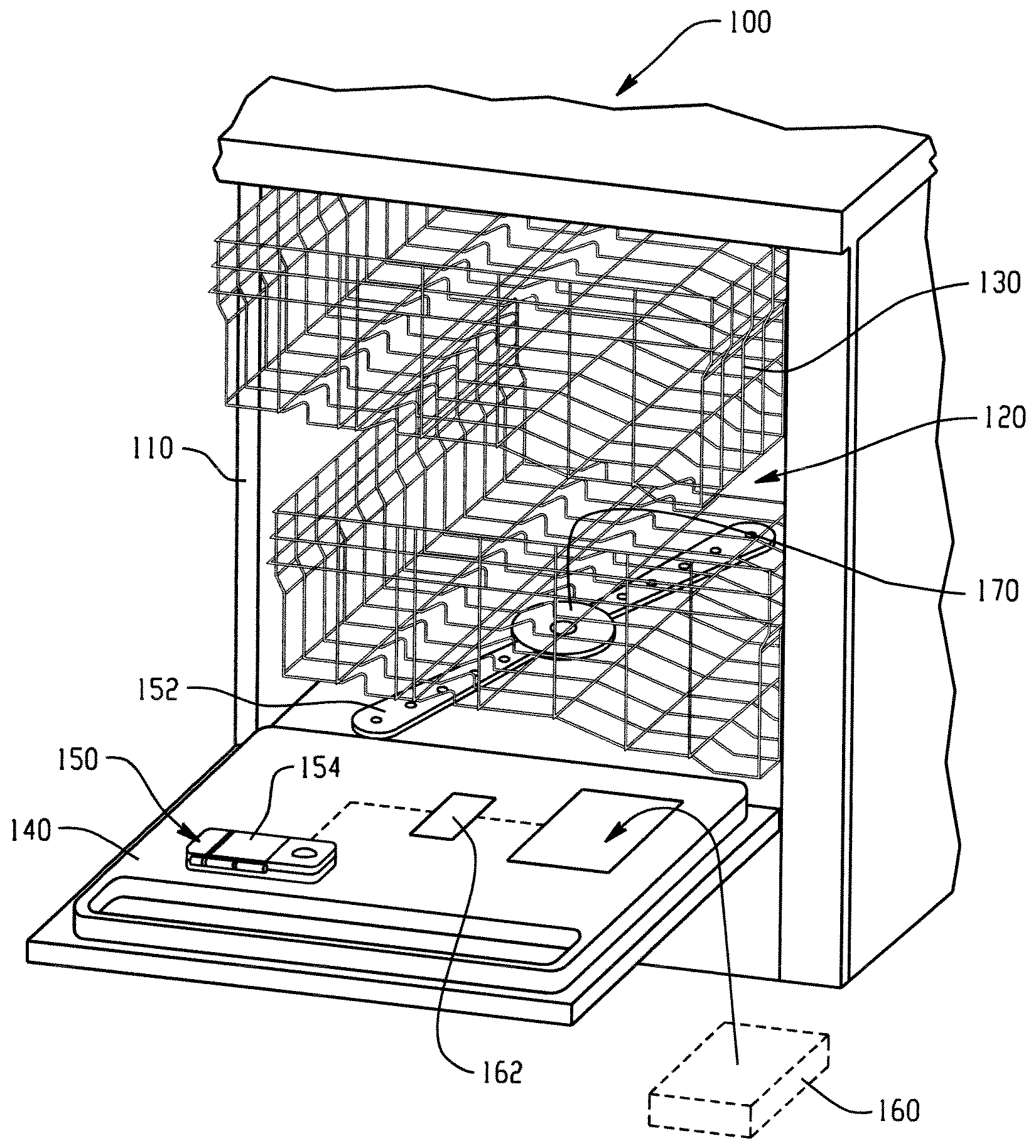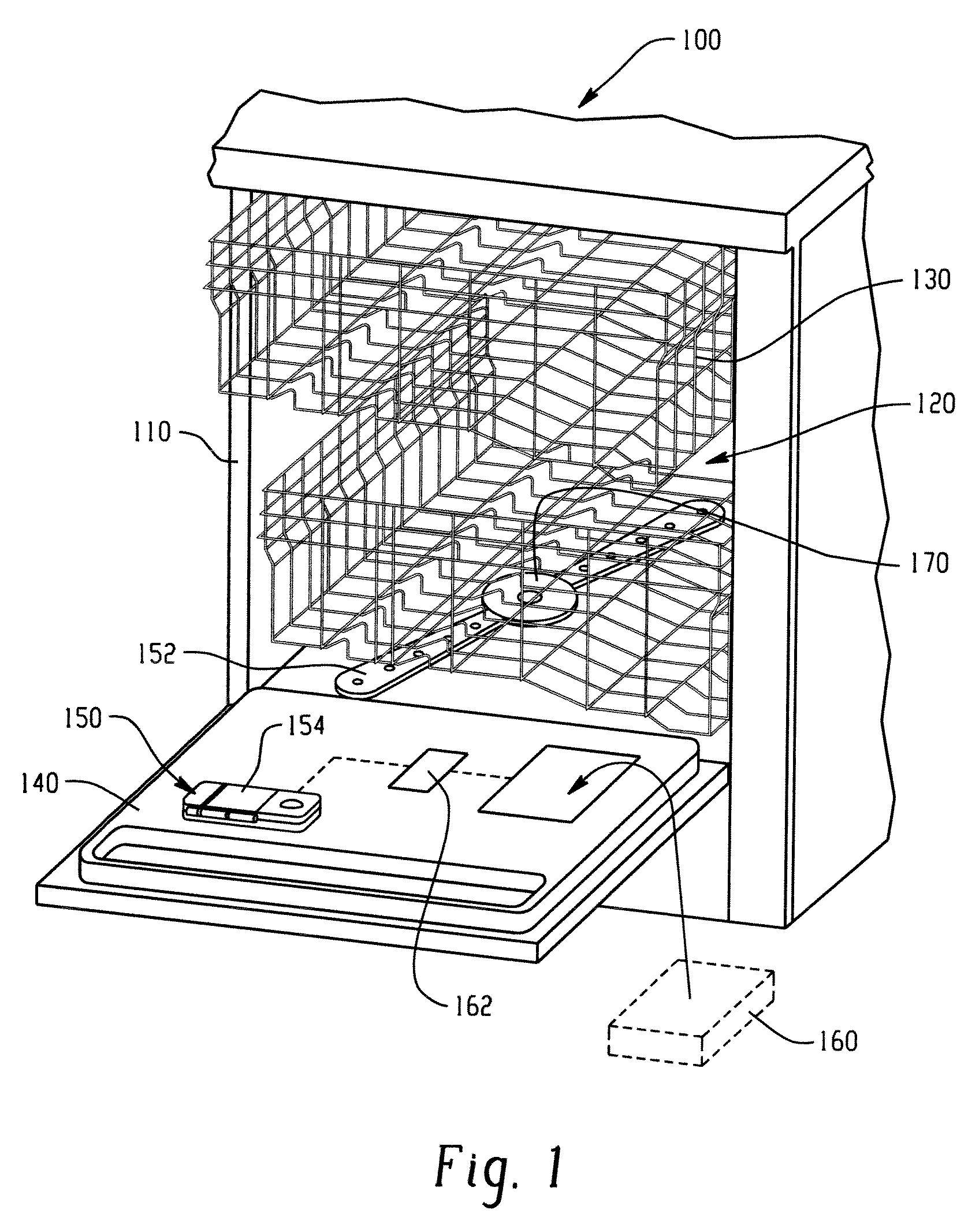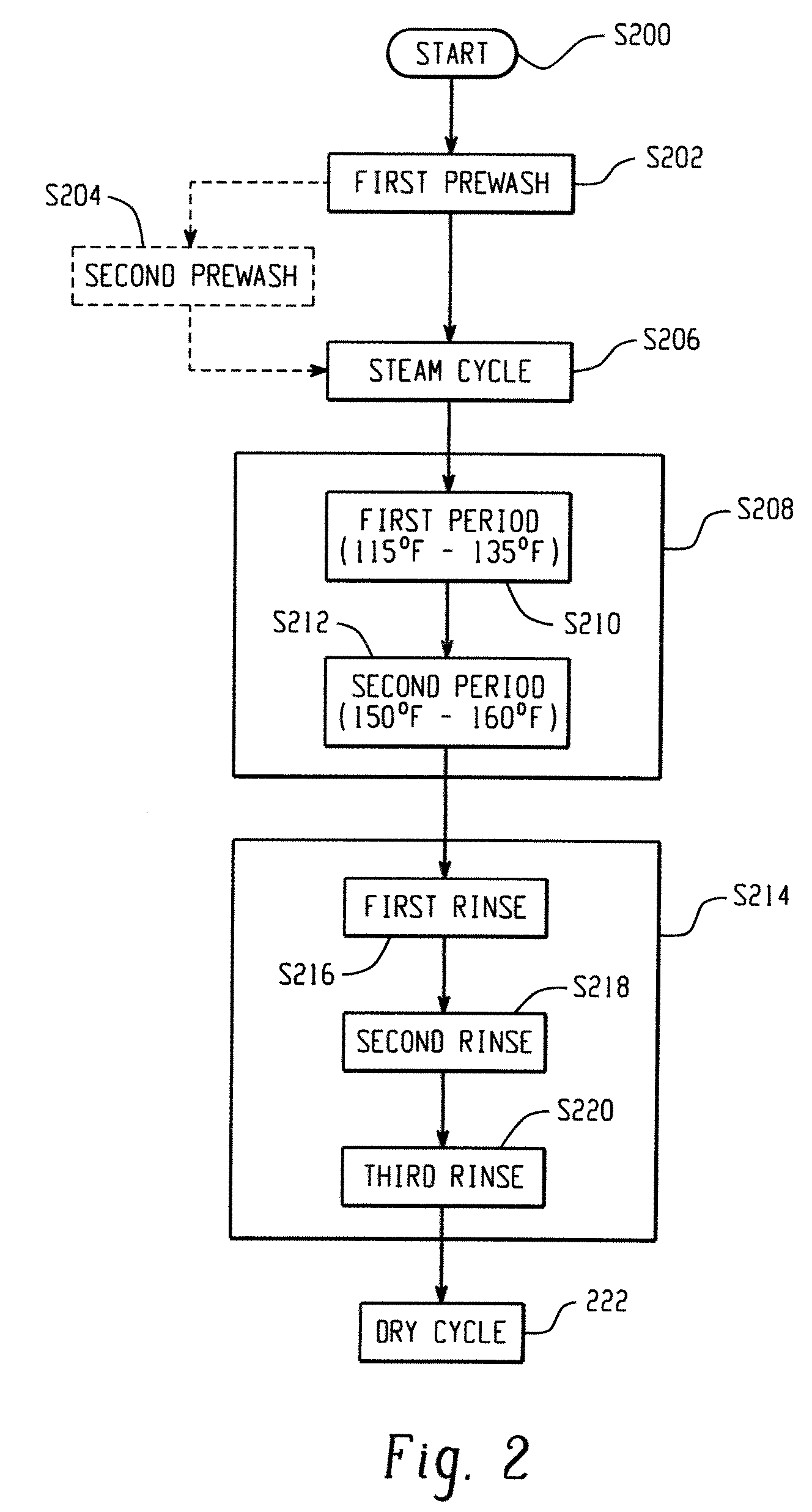Deep clean cycle
a deep clean and cycle technology, applied in the field of deep clean cycles, can solve the problems of ineffective enzyme based detergents, ineffective enzymes against carbonized food soils, and inability to effectively wash kitchenware and remove/rinse away burned-on food stains, and achieve the effect of selective energizing the heater and enhancing the performance of the first detergen
- Summary
- Abstract
- Description
- Claims
- Application Information
AI Technical Summary
Benefits of technology
Problems solved by technology
Method used
Image
Examples
Embodiment Construction
[0020]FIG. 1 shows a dishwasher 100 in which the present to-be-described wash routine is incorporated according to an exemplary embodiment of the present disclosure. The dishwasher 100 includes a housing 110 having a dishwasher chamber 120, which contains at least one dish rack 130 for supporting kitchenware (dishes, cutlery, cups, etc.) contained therein. The dishwasher 100 includes a dishwasher door 140 that pivotally opens or closes for loading and unloading of the kitchenware into the chamber; however, the present methods and wash routines disclosed herein can be incorporated in dishwasher embodiments having different configurations, e.g., drawers that extend and retract into the dishwasher chamber.
[0021]A detergent cup 150 is strategically positioned within the dishwasher chamber 120 (e.g., on an inner surface of the dishwasher door 140) where wash fluid sprayed from a fluid circulation system 152 comes into direct contact with detergent contained therein. The detergent cup 150...
PUM
 Login to View More
Login to View More Abstract
Description
Claims
Application Information
 Login to View More
Login to View More - R&D
- Intellectual Property
- Life Sciences
- Materials
- Tech Scout
- Unparalleled Data Quality
- Higher Quality Content
- 60% Fewer Hallucinations
Browse by: Latest US Patents, China's latest patents, Technical Efficacy Thesaurus, Application Domain, Technology Topic, Popular Technical Reports.
© 2025 PatSnap. All rights reserved.Legal|Privacy policy|Modern Slavery Act Transparency Statement|Sitemap|About US| Contact US: help@patsnap.com



